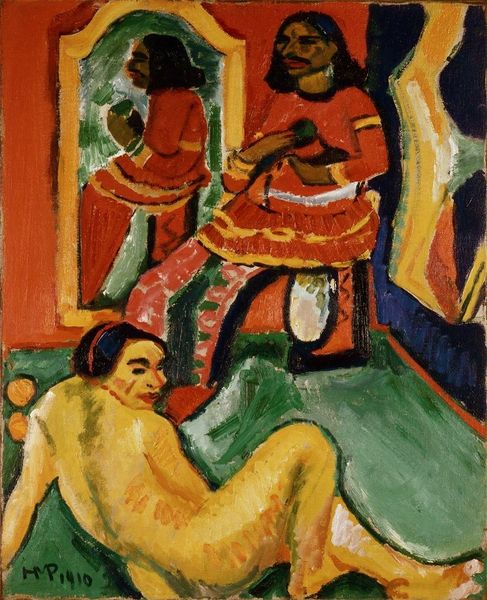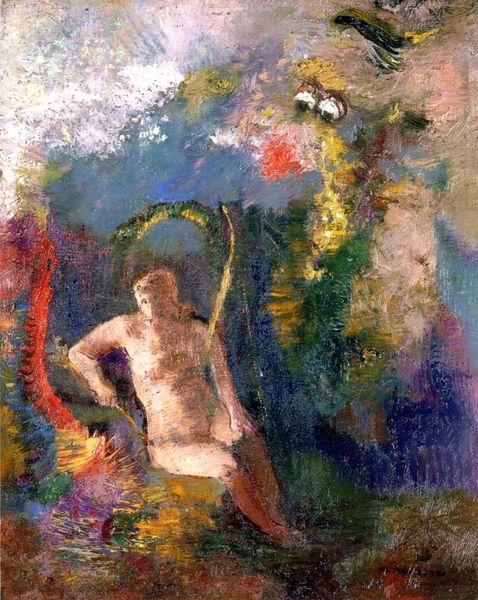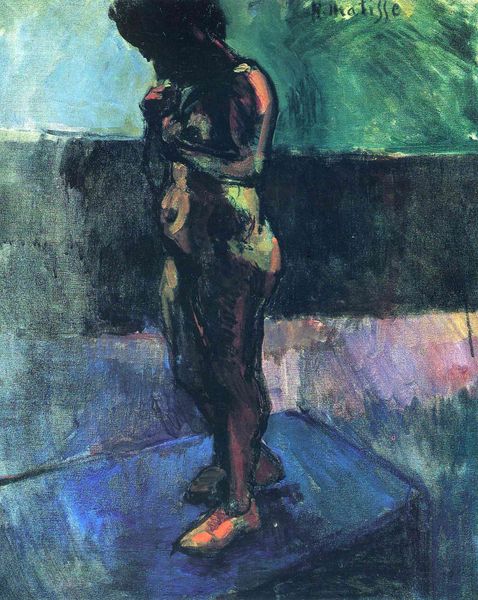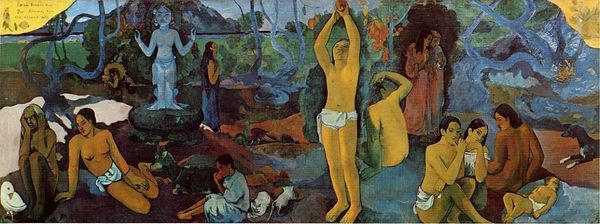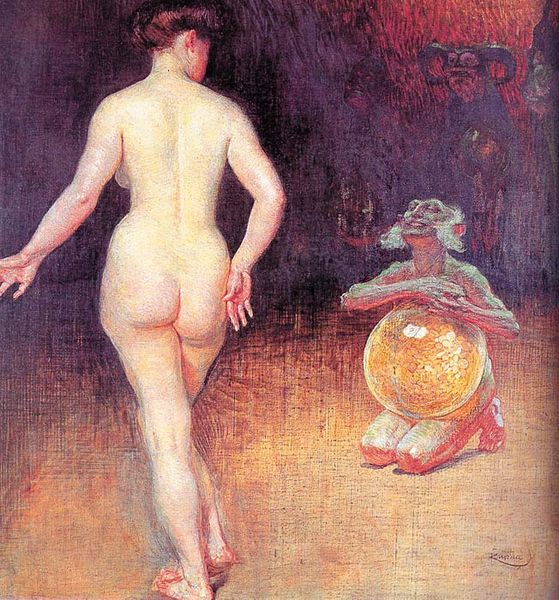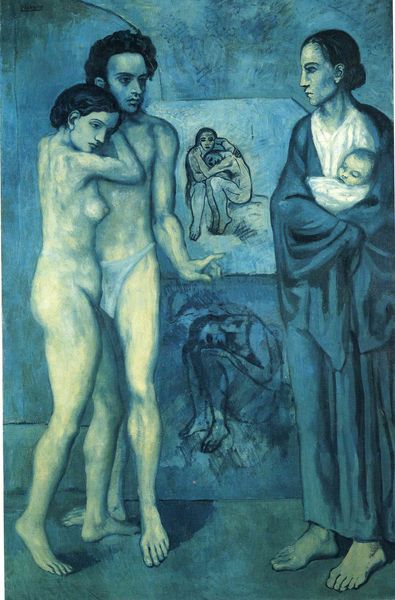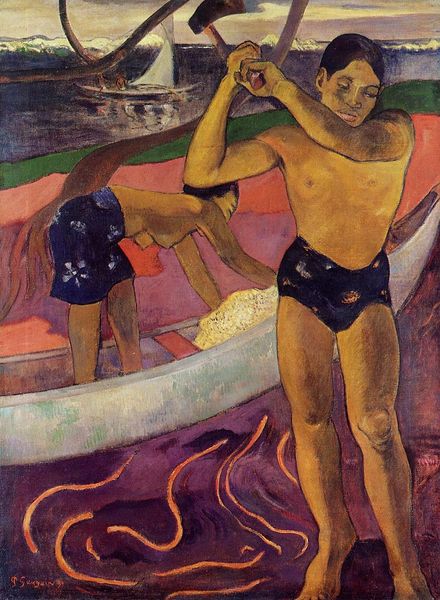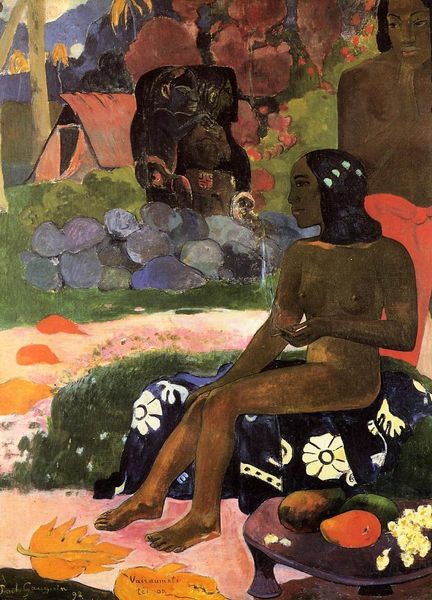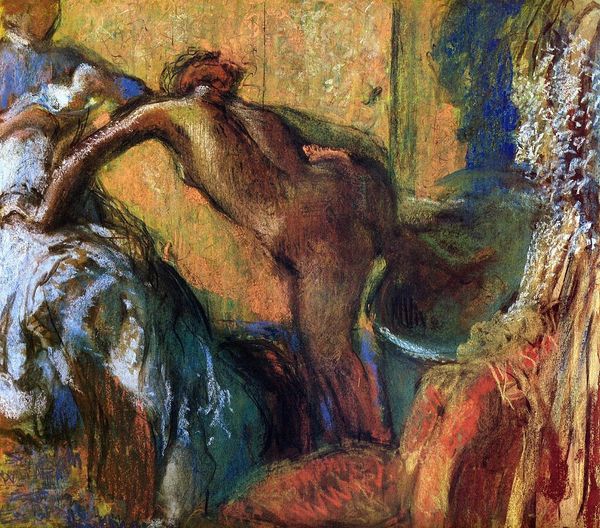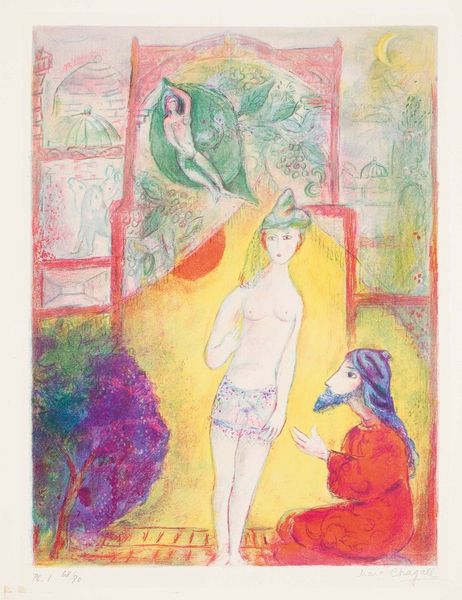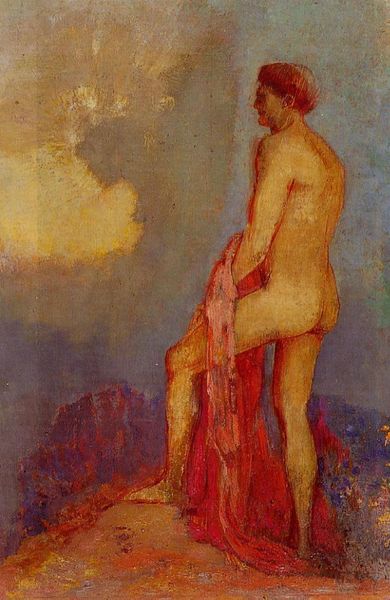
painting, oil-paint
#
allegories
#
painting
#
oil-paint
#
landscape
#
figuration
#
oil painting
#
symbolism
#
post-impressionism
#
nude
#
expressionist
#
erotic-art
Copyright: Public domain
Editor: This is Paul Gauguin's "Tahitian Man with His Arms Raised," painted in 1897, using oil paint. The composition is really striking – the figures seem both natural and symbolic. What underlying cultural statements can we unravel here? Curator: The layering of meanings is key. Gauguin sought refuge in Tahiti, but his gaze was complicated by colonialism and its impact. Do you notice how he exoticizes the indigenous people, painting them with this sort of idyllic primitivism, while seemingly disregarding the complex realities of their lives? Editor: I do. It feels like he's projecting a fantasy onto them, not really seeing them. But is he also perhaps criticizing European society through this idealization? Curator: That's precisely where it gets interesting. Gauguin's work critiques the perceived constraints of Western civilization, yet does so by appropriating and romanticizing another culture. It raises important questions: Who has the power to represent whom? What are the ethical implications of aestheticizing cultural difference? Notice the symbolic weight of color here. Do these reds evoke ritual or sacrifice? Editor: It’s definitely not a straightforward celebration. So, through this seemingly simple depiction, he engages with profound questions of cultural identity, power dynamics, and the artist's own position within that complicated web? Curator: Exactly. It invites us to question the narratives we tell ourselves about progress, civilization, and the "other." We need to look critically at how art, even with the best intentions, can perpetuate skewed power dynamics. Editor: It is a sobering and critical deconstruction that reshapes my view on Post-Impressionism, particularly considering today's climate of cultural exchange and ownership. Curator: Indeed. It encourages reflection and a critical examination of the lens through which we view and interpret art.
Comments
No comments
Be the first to comment and join the conversation on the ultimate creative platform.
